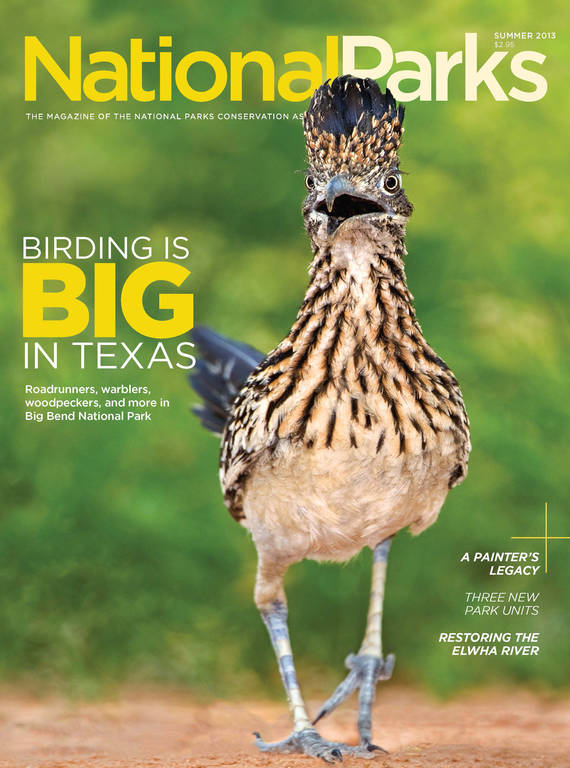Summer 2013
Dangerous Territory
Wyoming officials are under the mistaken impression that they can sanction a wolf hunt on park land between Yellowstone and Grand Teton.
Wolves have been at the center of controversy in the West for more than a century, and there’s no sign of that changing any time soon. The latest? Wyoming officials have asserted their authority to set a hunting season for wolves on a strip of national park land connecting Yellowstone and Grand Teton National Parks—the last two refuges in a state where wolves are often treated like the bloodthirsty figures from a Grimm fairy tale.
THE NUMBERS
Roughly 50 years after wolves vanished from the Rockies, 14 wolves were relocated from Canada to Yellowstone in 1995, and another 17 were brought in 1996, reintroducing the species to the region. The move was so successful that the species was taken off the Endangered Species List, leaving their management to the states. That transition hasn’t been easy. In the latest development, the state of Wyoming is claiming to have jurisdiction over wolves in the John D. Rockefeller Jr. Memorial Parkway, a 24,000-acre swath of park land that allows wildlife to move between Yellowstone and Grand Teton. Although the JDR Parkway’s founding legislation allows for hunting, the Park Service has the responsibility for determining whether hunting is appropriate; the Park Service has voiced its preference that wolf hunting not be permitted in the Parkway, but the agency has taken no action to prevent it. In May, NPCA responded by citing the importance of wolves to the ecosystem and formally asking the Park Service to assert its control over the matter by issuing a rule that would ban hunting on the JDR Parkway.
“Federal statutes make clear that the Park Service has the overall authority and responsibility to manage these national park units, and that includes making decisions about what hunting to allow there,” says Bob Rosenbaum, an attorney with Arnold & Porter, representing NPCA. “Only the Park Service has the expertise and breadth of responsibility to take into account the impact that wolf hunting there would have on the ecosystem of those parks and on their visitors.”
The Park Service must respond to NPCA’s petition in a “reasonable” amount of time, which some say could be several months. If the Park Service denies the request, the case could go to court.
“Although it’s not likely that the state would initiate a hunt in the JDR Parkway this fall, it could certainly happen within the next few years,” says Sharon Mader, senior program manager in NPCA’s Grand Teton field office. “That’s why it’s so important for the Park Service to take steps to ensure sure that no wolves are killed on park lands now or anytime in the future.”
As NPCA’s petition noted, quoting from the Park Service’s own findings, wolves have become a “showcase animal” in Yellowstone, attracting visitors just for the purpose of wolf watching. In Grand Teton, visitors had consistently cited wildlife viewing as the primary draw to the park. Numerous studies have shown that the reintroduction of the wolf has had a major beneficial impact on the entire Greater Yellowstone Ecosystem.

National Parks
You can read this and other stories about history, nature, culture, art, conservation, travel, science and more in National Parks magazine. Your tax-deductible membership donation of $25 or more entitles…
See more ›Given that parks provide one of the few refuges for wolves in the region, every inch of that land is important. Recent estimates peg Wyoming’s wolf population at 277, with 38 packs throughout the region, including those in Yellowstone and Grand Teton.
The state’s animosity towards wolves is particularly surprising given the fact that the economic impact of tourism in Wyoming is second only to mineral royalties from oil and gas. A 2008 study found that $22.5 million in spending in counties adjacent to parks could be attributed to the presence of wolves in Yellowstone. Some hunting outfitters argue that wolves hurt their livelihood, but 17 years after wolf reintroduction, elk populations remain abundant, actually exceeding the ideal range set by Wyoming’s own wildlife officials. Regardless, one thing is clear: Biologists with the Park Service are the ones who should determine the fate of wolves on park lands.
“Permitting the hunting of an animal fresh off the Endangered Species List within a national park unit is unprecedented,” says Mader. “It’s truly a shame that after spending millions of taxpayer dollars to recover the gray wolf in this region that the federal government would choose to permit wolf hunting within our national parks.



